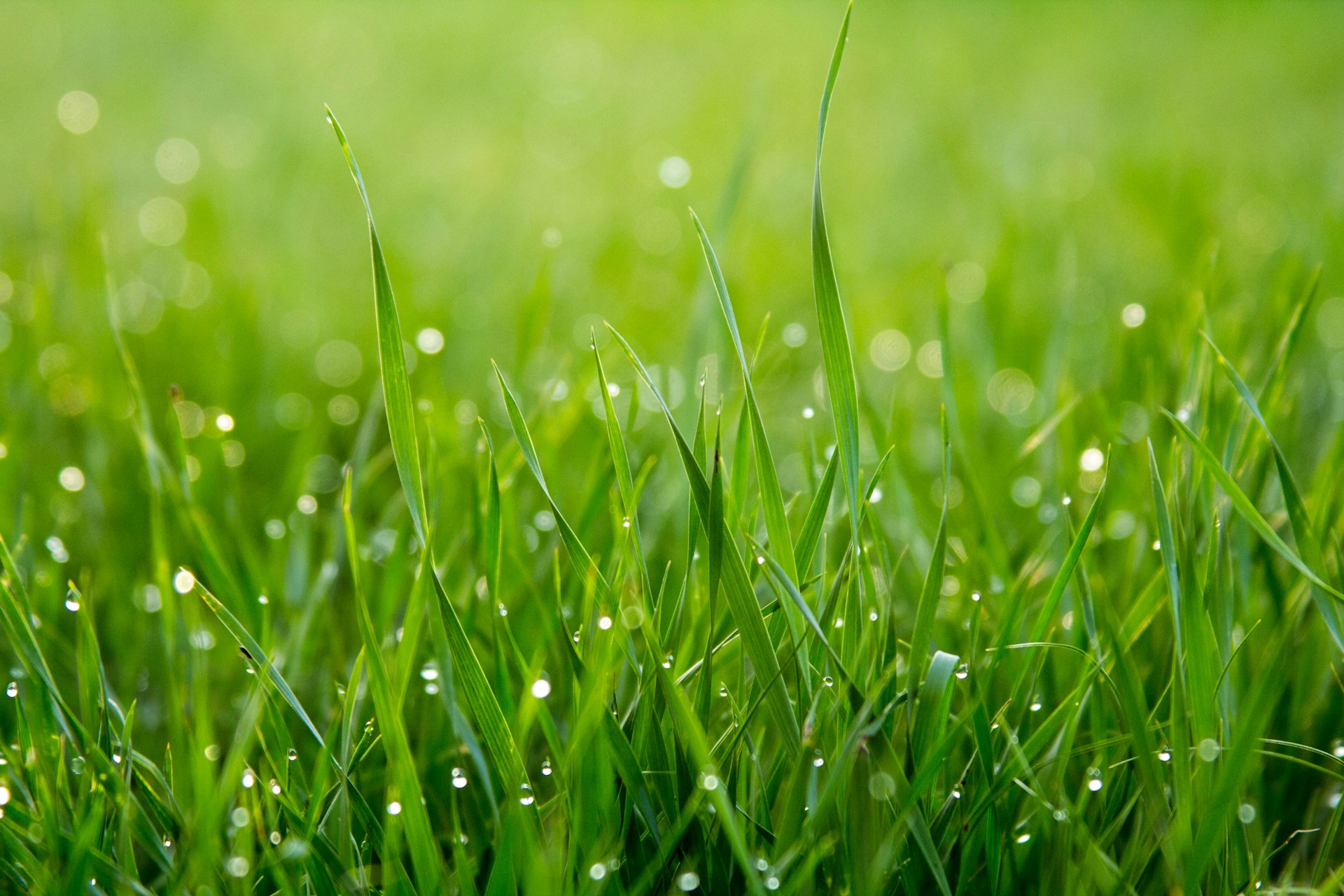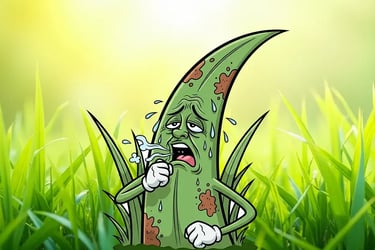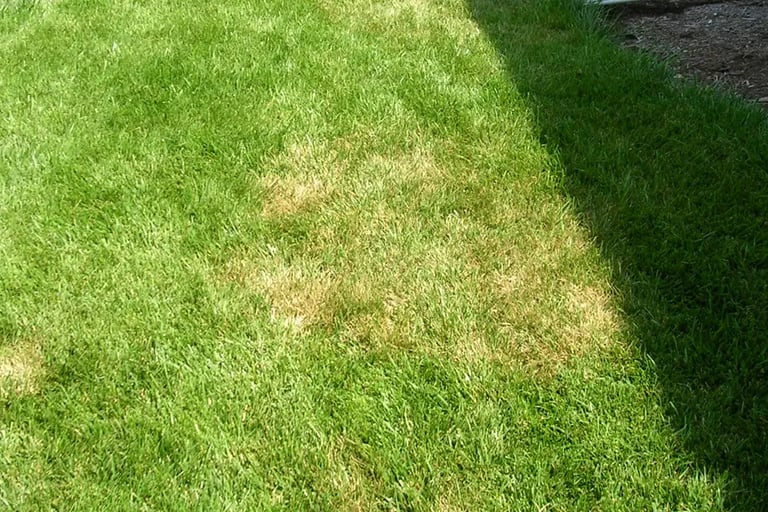
Fungus on your fescue, discover what it is, how to spot it.
Does your lawn look like it has drought stress? Chances are, it is fungus!
I’m sure you’re thinking, “My lawn can’t get a fungal infection!” But unfortunately, it is true! It’s bad Karma for overwatering during a drought, according to Boomer! He still hasn’t turned on his sprinklers, and his fescue is emerald green and thriving. Coincidence? Not a chance!
Karma aside, it’s more likely, and an actual fact, that too much water provides a breeding ground for brown patch, also known as lawn fungus!
Let’s dig into why overwatering is a recipe for brown patch, how to spot the difference between drought stress and disease, and what you can do in addition to texting Boomer for help.
Fungus loves your overwatered fescue grass.
Why Fungus Loves Your Overwatered Fescue
In Wichita, often during the spring and summer, we get the perfect storm for lawn fungus: high humidity, warm nights, and, if you’re overzealous with the hose, consistently wet grass. Top it off with an unusually rainy spring, and chances are that if you’ve had your sprinklers running at all, you’re seeing fungus, not drought stress, on your lawn.
Fescue lawns are especially susceptible to diseases like brown patch (Rhizoctonia solani), which thrives when nighttime temperatures stay above 65°F and the grass remains moist from evening watering or heavy dew.
Overwatering or too much water anytime, drought or not, is one of the most common ways homeowners invite fungus into their lawns. The fungus enters the grass plants when they’re wet, especially if you water at night or keep the soil soggy.
Fungus vs. Drought Stress: Don’t Be Fooled!
Here’s the kicker: the symptoms of brown patch and drought stress look almost identical. Both can cause brown, patchy, or discolored areas in your fescue. But there are some telltale signs to help you spot Mr. Fungus before he throws a party in your yard:
Brown Patch: According to the K-State Extension Office, look for rough, circular patches (1–5 feet wide) that start dark green or purple and quickly fade to tan or brown. Check for tan lesions with brown borders on the grass blades. On dewy mornings, you might even spot white, cobweb-like fungal growth.
Dollar Spot: Small, round, tan patches the size of a silver dollar, often with yellow centers and dark borders on the blades.
Leaf Blight: Bleached or brownish patches where leaves die from the tip down, sometimes with a brownish-purple line across the plant.
Rust: Yellow-orange flecks or powdery pustules on the leaves, especially in late summer and fall.
If your lawn looks thirsty but the soil is moist, or you notice odd patterns and lesions on the blades, it’s probably fungus, not drought. And honestly, with all the rain we’ve had recently, there is a very small, microscopic chance that your lawn could be drought stressed.




